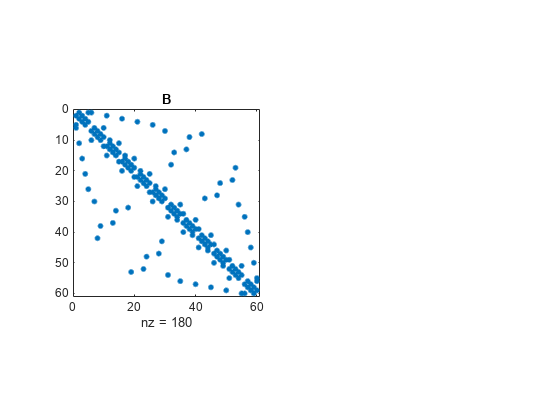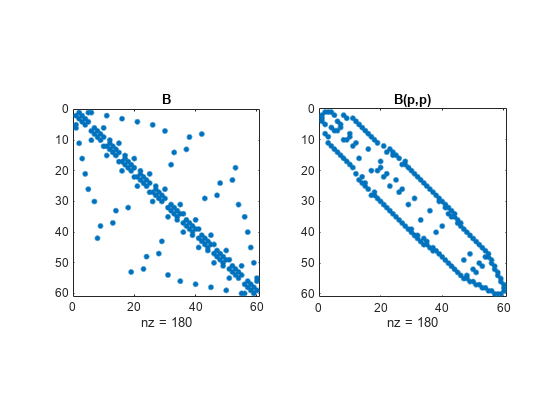symrcm
Sparse reverse Cuthill-McKee ordering
Syntax
r = symrcm(S)
Description
r = symrcm(S) returns
the symmetric reverse Cuthill-McKee ordering of S.
This is a permutation r such that S(r,r) tends
to have its nonzero elements closer to the diagonal. This is a good
preordering for LU or Cholesky factorization of matrices that come
from long, skinny problems. The ordering works for both symmetric
and nonsymmetric S.
For a real, symmetric sparse matrix, S, the
eigenvalues of S(r,r) are the same as those of S,
but eig(S(r,r)) probably takes less time to compute
than eig(S).
Examples
Algorithms
The algorithm first finds a pseudoperipheral vertex of the graph of the matrix. It then generates a level structure by breadth-first search and orders the vertices by decreasing distance from the pseudoperipheral vertex. The implementation is based closely on the SPARSPAK implementation described by George and Liu.
References
[1] George, Alan and Joseph Liu, Computer Solution of Large Sparse Positive Definite Systems, Prentice-Hall, 1981.
[2] Gilbert, John R., Cleve Moler, and Robert Schreiber, “Sparse Matrices in MATLAB: Design and Implementation,” SIAM Journal on Matrix Analysis, 1992. A slightly expanded version is also available as a technical report from the Xerox Palo Alto Research Center.
Extended Capabilities
Version History
Introduced before R2006a

